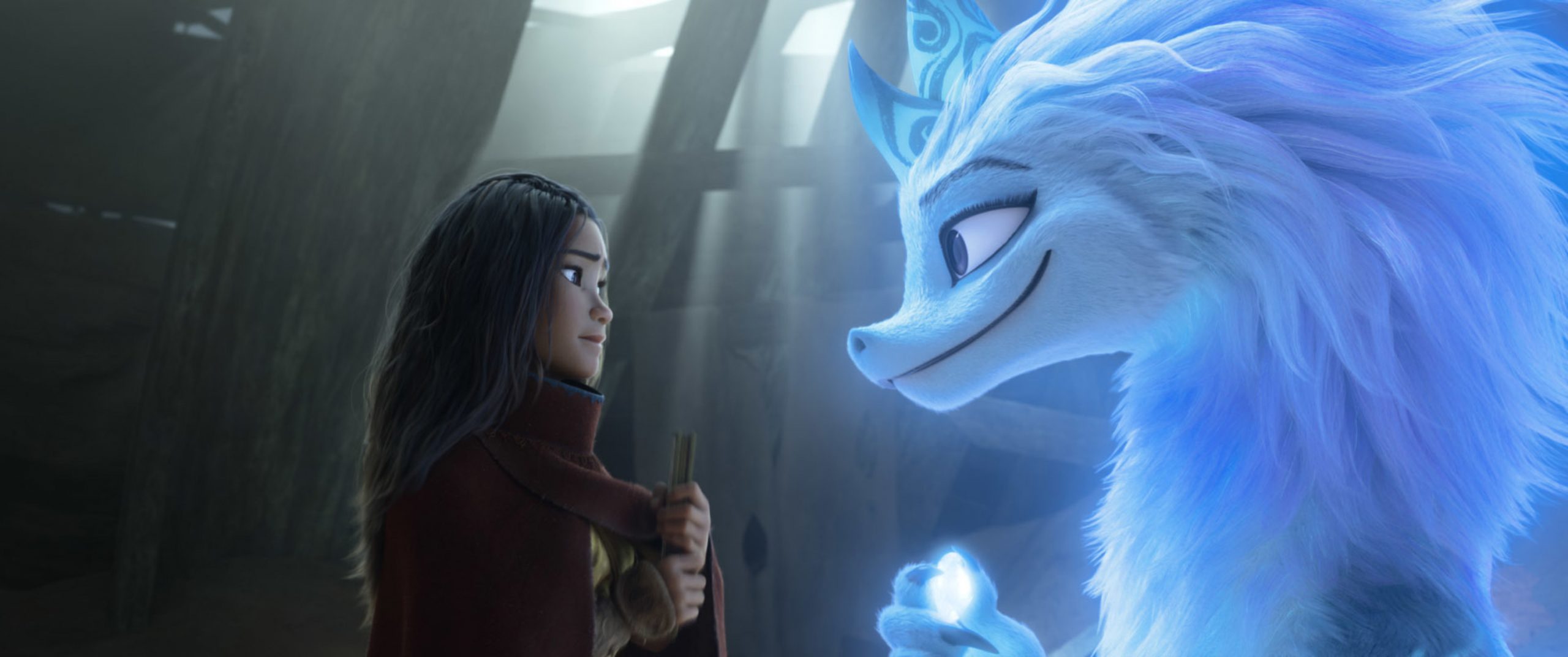“Raya and The Last Dragon” represents Southeast Asian culture beautifully, tells a story of unity and presents us with the strongest warrior princess Disney has to offer.
“Raya and The Last Dragon” was released March 5 in limited theatrical showings and on Disney+ for $30. The Directors, Don Hall (“Big Hero 6”) and Carlos López Estrada (“Legion”), create a world influenced by Southeast Asian mythology and culture. The world has beauty and depth coming from each inch of it. This comes as no surprise, as Hall previously created an equally as engaging world in “Big Hero 6.”
Kelly Marie Tran’s character, Raya, has stunning costumes that take influence from all Southeast Asian cultures. The dragon, Sisu, played by Awkwafina, is reminiscent of the dragon, Haku, from “Spirited Away,” and is brought to life in stunning fashion. Both Tran and Awkwafina portray their characters with great performances.
Raya is from the land of Kumandra, where humans and dragons lived together in peace. Then an evil force known as the Druun threatens humanity, and the dragons sacrifice themselves to save the humans. 500 years later the Druun returns, and it is up to the warrior Raya to track down the last dragon and restore the world and unite the people of the land.
Raya as a character is one of the most independent Disney princess we have ever seen. She rivals even Merida (Brave), Moana and Mulan as the most action-forward princess.
Raya is not a hero because of magic, someone telling her to become one, nor is she fueled to find “true love’s kiss.” The plot is entirely pushed forward by her choices and actions. She feels like the protagonist in an action film yet also feels at home in a Disney film. The movie does not force the audience to respect Raya as a warrior by pointing out that she is a woman who is capable of fighting.
Furthermore, the choice to make Raya, and the supporting cast, ambiguously Southeast Asian is a wise choice. Girls and women of Southeast Asian descent will physically be able to relate to her and the cast without feeling excluded. The audience can also enjoy a wide range of cultural influences in the setting. This is the same choice they made with Moana.
Unfortunately, the movie may be a little too ambitious. The world that Raya lives in is lively and expansive. Yet, the movie jumps around to so many locals and focuses on so many characters that the audience never gets the chance to fully engage with the setting.
The rival princess, Namaari, and Raya’s band of allies are the most clear examples of this. Raya’s friends are fun and each are interesting in their own way, but do not receive enough screen time to make the ending of the movie powerful.
The theme of trust in this movie is something that many people will find solace in. Today, it feels like there is no one to turn to anymore and that we have all been hurt. Raya reminds the audience to try to trust in others because distrust only breeds more distrust.
The story is not heavy-handed with this theme, either. The writers respected the audience’s intuition enough to never over-explain what the message of the story is. Though during the end of the movie it is slightly heavy-handed, perhaps in an attempt to make the story more emotional. Despite this, the overall story of the movie is one that anyone could relate to.
Watch the trailer here.
Image Sources
- ENTER-RAYA-LAST-DRAGON-MOVIE-REVIEW-MCT: Tribune News Service | Used With Permission

